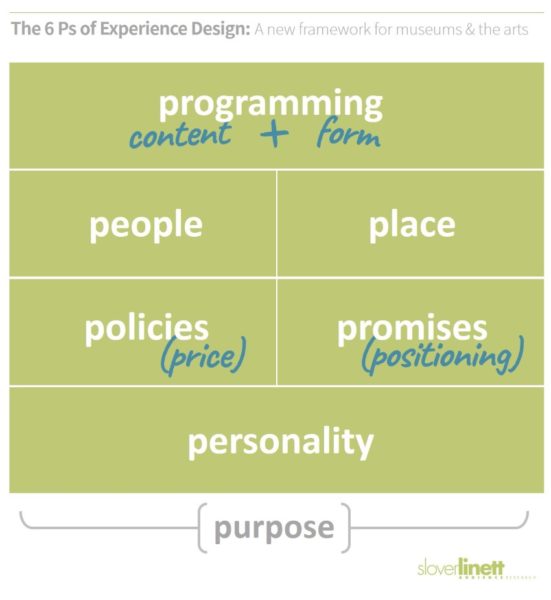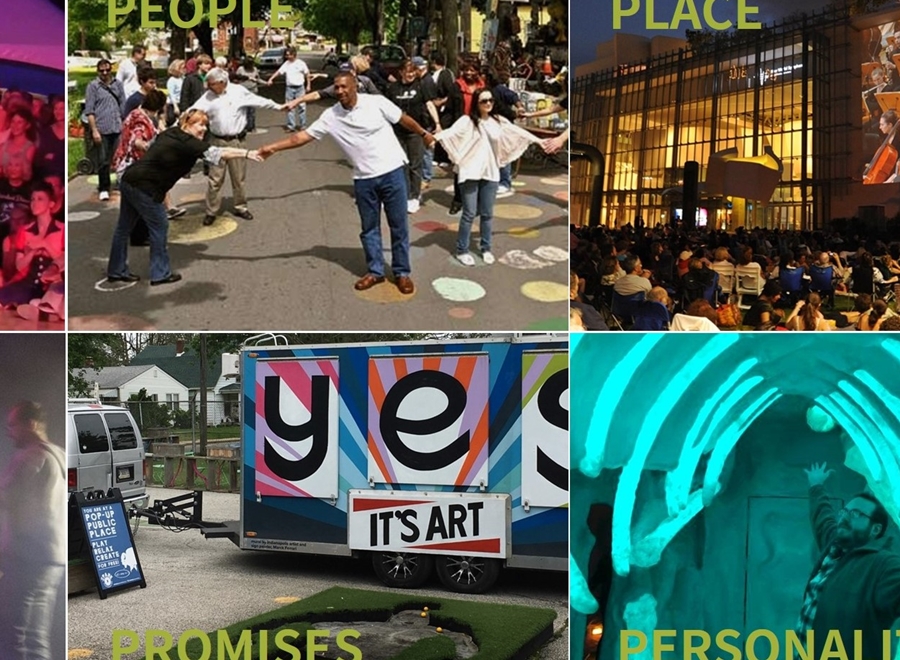News & Notes
Introducing the 6 Ps of Experience Design — A new framework for museums & the arts
Your audience doesn’t see you in silos. They see the whole experience. Design that.
We’ve been thinking lately about experience design. Being a research firm, we don’t create arts & culture experiences ourselves; we study them. A lot, and in an increasingly wide range of ways and contexts. And we’ve realized that, whether or not they use those words, arts organizations, museums, and most other cultural enterprises are in the experience design business.
So we’ve decided to share a new framework we’ve developed to help our clients — and ourselves as researchers & evaluators — think holistically and empathetically about experience design. We’re calling it the 6 Ps, and yes we know that sounds suspiciously catchy and simplistic. But it’s actually meant to deepen and challenge, not simplify or shortcut, the work of creating cultural experiences that are both meaningful and pleasurable for your audience, visitors, or community.

Click on the diagram to read the next post, “Overview of the framework,” which includes a larger, printable diagram.
It’s based on the familiar idea that people perceive, encounter, remember, and relate to your organization not in departmental or professional silos but holistically, based on the overall experience (or sequence of experiences) you’ve built for them. The 6 Ps are a reminder to think comprehensively about what we’re offering, so we can bring creativity, intention, and energy to all the areas that matter.
The framework is still very much a work-in-progress. We invite your comments and suggestions (seriously). And we’d be happy to help you test-drive the 6 Ps in an upcoming planning or design process.
Read more and see the framework in the next post in the series…
Series menu: The 6 Ps of Experience Design
- Introduction [this post]
- Overview of the framework
- Programming
- People
- Place

